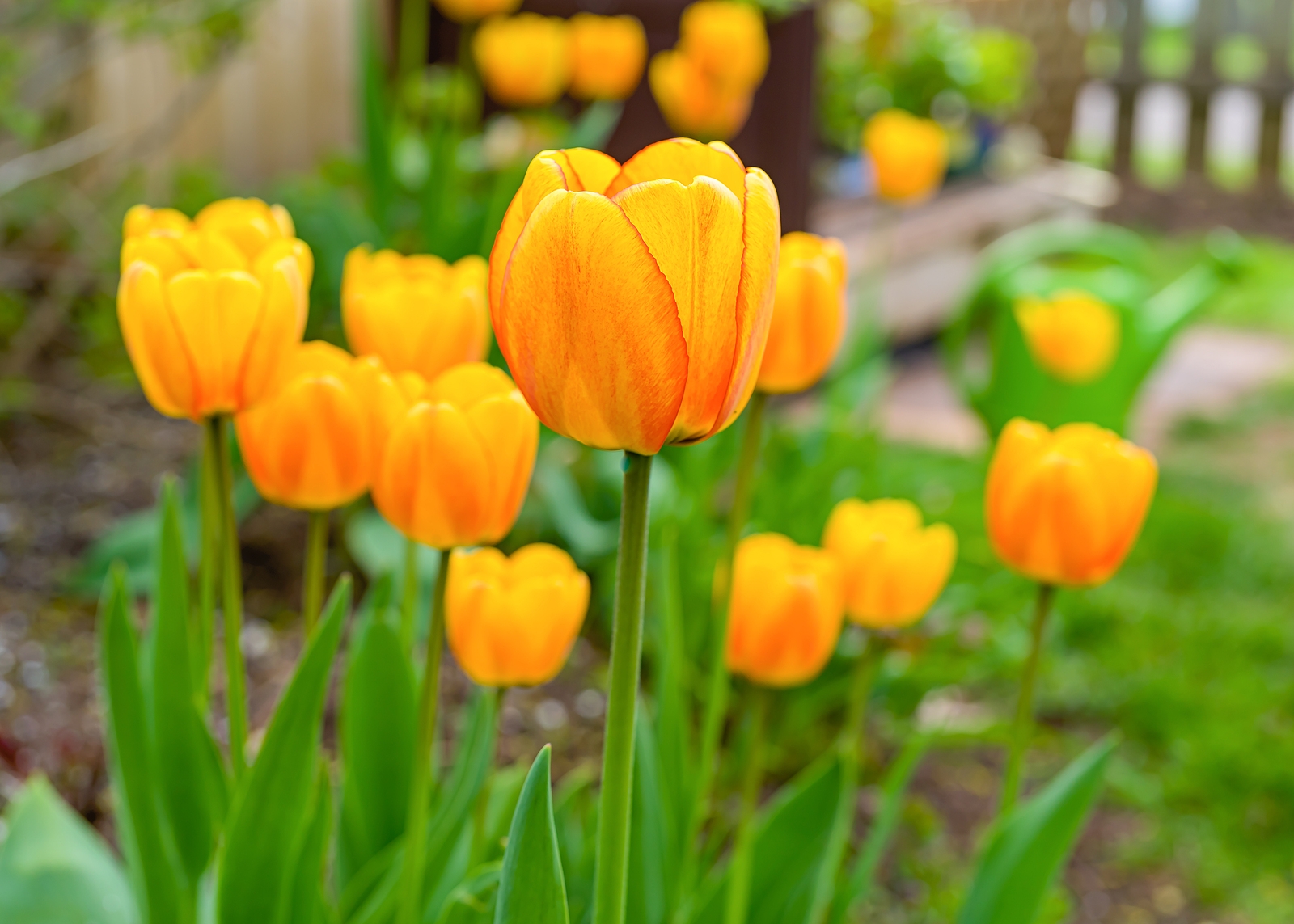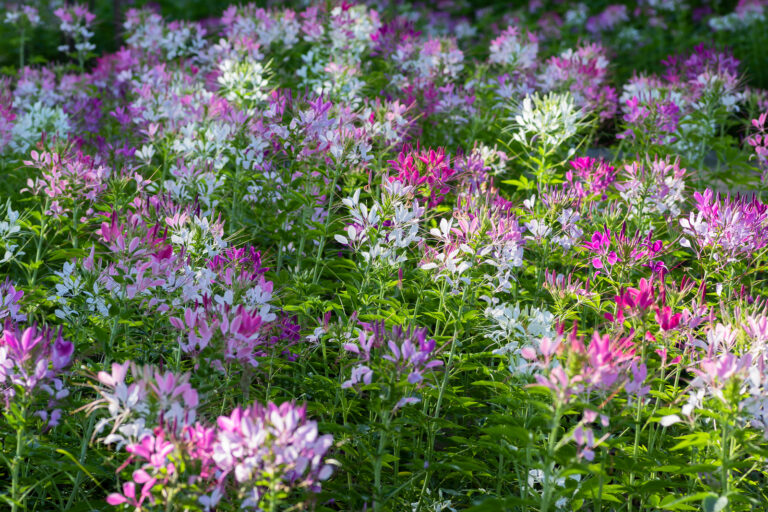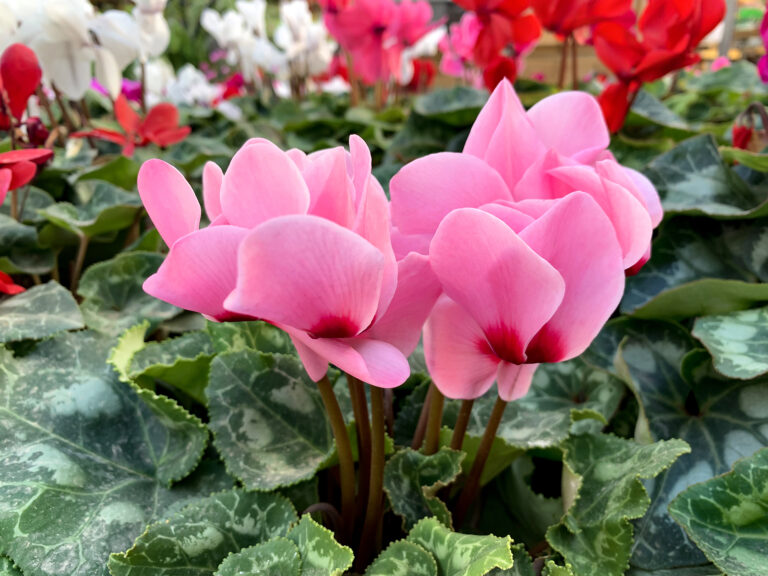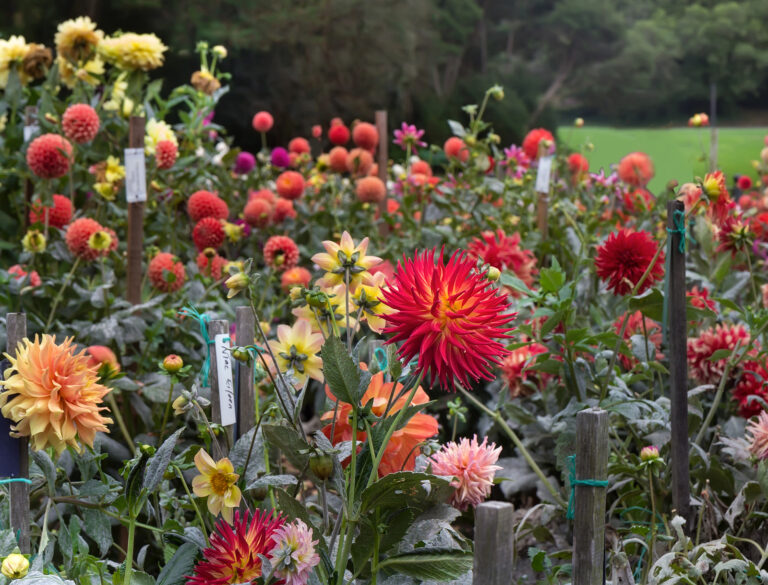How to Grow Tulip — Tulipa
Tulips are classic spring-blooming bulbs prized for their showy flowers that come in a wide range of colors–nearly all colors except true blue. Many tulips are bicolored. the most familiar tulips have elongated cup-shaped blooms, but there are also tulips with bowl-shaped blossoms and double-flowered cultivars. There are goblet- and star-shaped tulip blooms as well.
Tulip flowers are borne on slender, upright, usually unbranched stems reaching upwards from basal linear and strap-shaped leaves. Tulips grow from plump teardrop-shaped, tunicate bulbs.
There are about 100 species of tulips and hundreds of named cultivars. All are organized into 15 divisions based on flower shape and origin. Grower catalogs use the divisions to organize their offerings. Roughly, tulips are divided into two groups, species tulips, and hybrid tulips.
The smaller species of tulips are best used in informal beds, borders, and rock gardens. Taller, larger hybrid tulips are dramatic and good choices for formal, massed beds, and in clumps in the flower garden or shrub border. Tulips make excellent cut flowers as well.
While all tulips bloom well the first year, many decline in the following years, especially some hybrids. Choose tulips from the following division for best performance: Darwin Hybrid Tulips, Triumph Tulips, Kaufmanniana Tulips, Fosteriana Tulips, and Greigii Tulips. Species of tulips that are good performers are Tulipa batalini, T. humilis, T. saxatilis, and T. tarda. (See below)
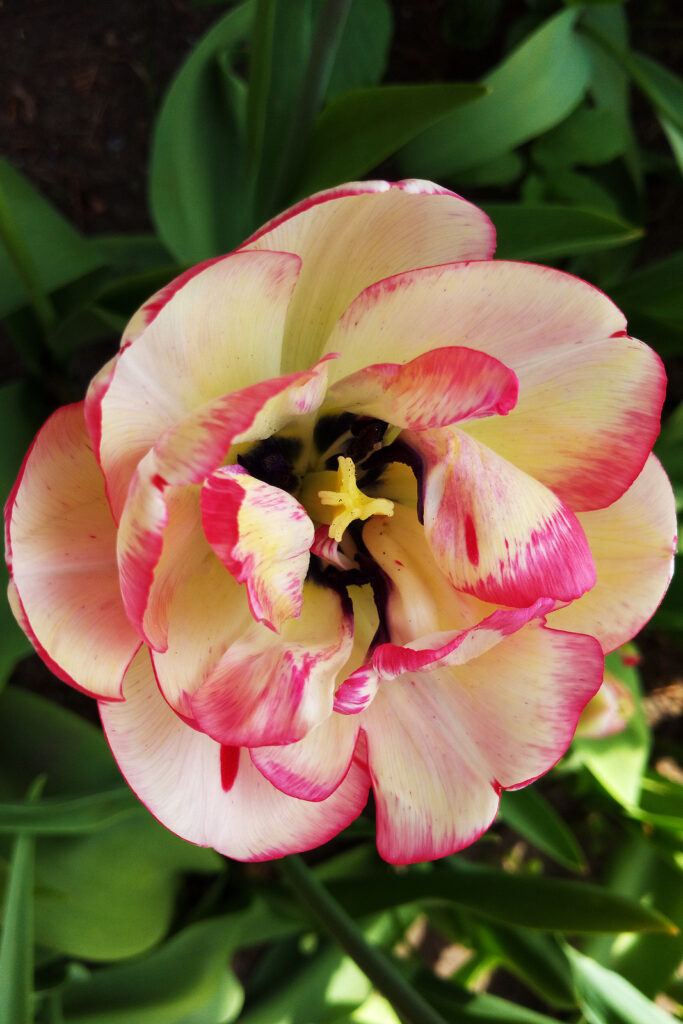
Get to know Tulips
- Plant type: Hardy spring-blooming bulb
- Growing Zones and range: Zones 3 to 11; perennial in Zones 3-7; annual in Zones 7-11
- Hardiness: Hardy; must have frost during winter; tolerant of heat and cold
- Height and width: 4 to 30 inches (10-76cm) tall, 4 to 10 inches (10-25cm) wide
- Flowers: Single or double bowl-shaped flowers; colors include red, pink, orange, gold, yellow, blue, lavender, purple, black, or white; many bicolors
- Bloom time: Early to late spring
- Uses: Beds and borders, mass plantings, pattern plantings
- Common name: Tulip
- Botanical name: Tulipa spp.
- Family name: Liliaceae
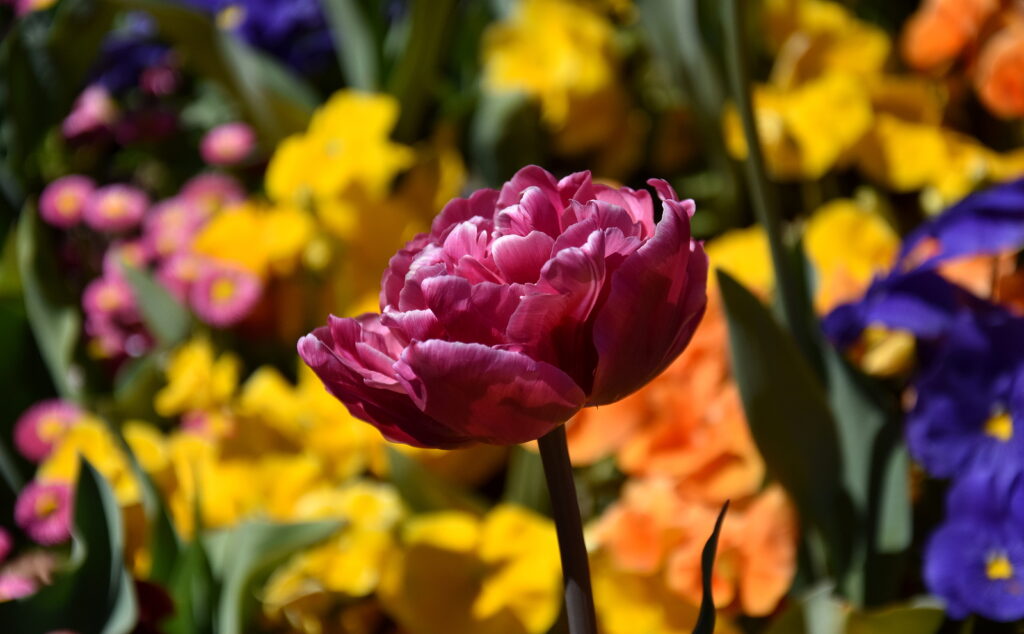
Where to plant Tulips
- Plant tulips in full sun, or in light shade under deciduous trees.
- Grow tulips in humus-rich, well-drained soil.
- Tulips prefer a soil pH of 6 to 7.

When to plant Tulips
- Plant tulips in mid-autumn in Zones 3-7; work compost and bulb fertilizer into the soil.
- In Zones 8-11, place bulbs in the refrigerator for 6 to 10 weeks before planting outdoors.
- Tulips can be forced indoors for winter bloom pot bulbs in fall, place the pots in a refrigerator or outdoors if temperatures are cooler than 40°F (4.4°C) for four to six weeks, and then bring them indoors to grow and bloom.
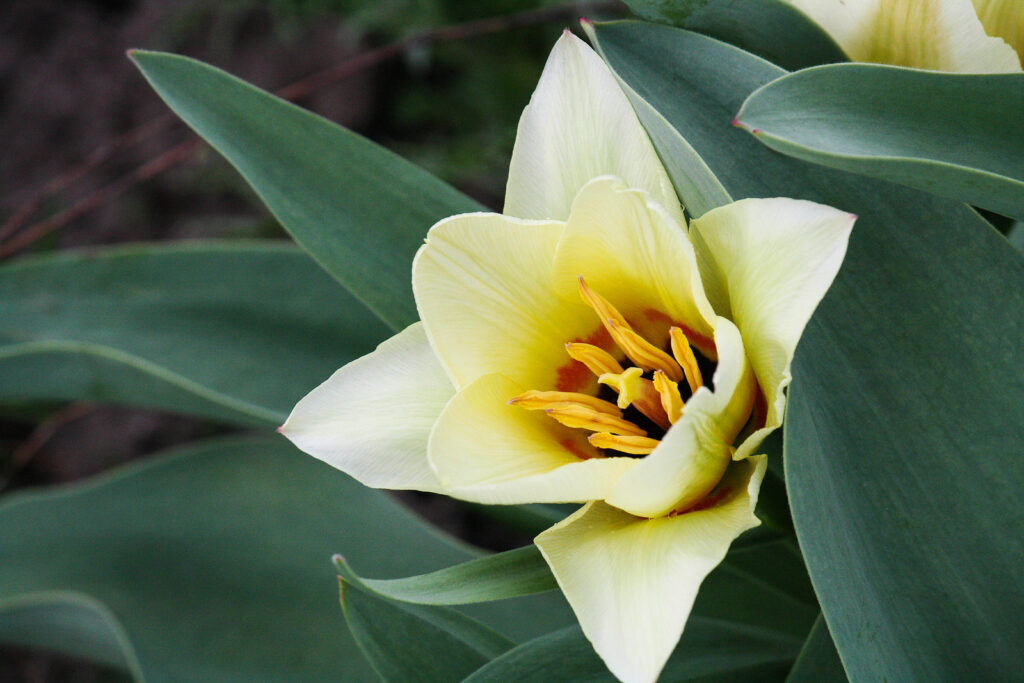
Spacing and planting Tulips
- Space tulips 4 to 10 inches (10-25cm) apart.
- Plant tulips 4 to 6 inches (10-15cm) deep.
- For best effect, plant tulips in groups, use 6 bulbs of smaller tulips and 3 or more bulbs of larger tulips in each group.
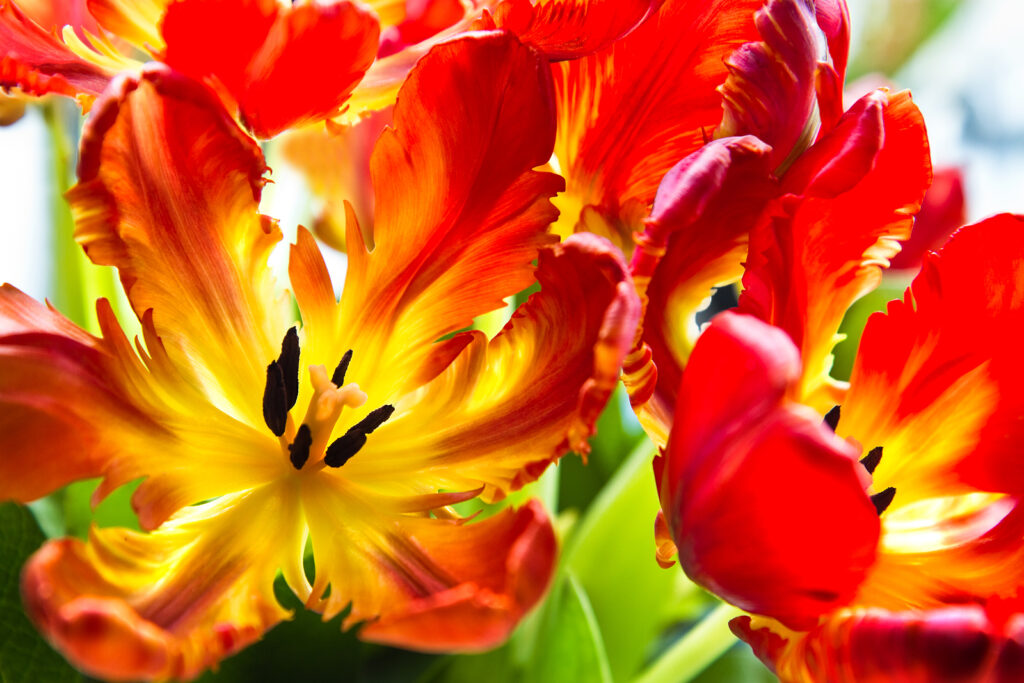
How to water and feed Tulips
- Tulips need ample water during growth and bloom and moderate water after.
- Add bonemeal or an all-purpose fertilizer to planting holes when planting bulbs.
- Fertilize tulips with an all-purpose fertilizer in spring when shoots begin to emerge.
Tulips care
- Mulch tulips for winter protection in Zones 3-4; cover bulbs with chopped leaves. In very cold winter regions, mulch with 6 inches of evergreen boughs. Remove the mulch when leaves appear in early spring.
- Remove flowers as soon as they fade to prevent seed set and encourage bulb development.
- In spring, after blooming, allow foliage to die back before removing it.
- Tulips can be forced indoors. Seed Planting above.
Growing Tulips as houseplants
- Tulips can be purchased in bloom or bulbs can be forced into bloom at home.
- To force your own tulips, pot the bulbs in fall in a well-drained, soilless medium and place five to six bulbs in a 6-inch pot.
- Plant the bulbs with the flat side against the rim of the pot.
- The tip of the bulb should be just below the medium.
- Place the pot outdoors, either protected in a cold frame or buried in the ground.
- If temperatures do not drop below 40°F, the pot and bulbs must be refrigerated. Chill the bulbs for 12 to 16 weeks or until the bulbs have 2 to 3 inches of top growth.
- Move the pot to a room where the temperature is cool, light is direct and humidity is medium to high.
- Keep the medium evenly moist.
- Fertilizing is not necessary.
- Tall varieties may be staked.
- After the tulips have finished blooming they can be planted outdoors where they may bloom the following year.
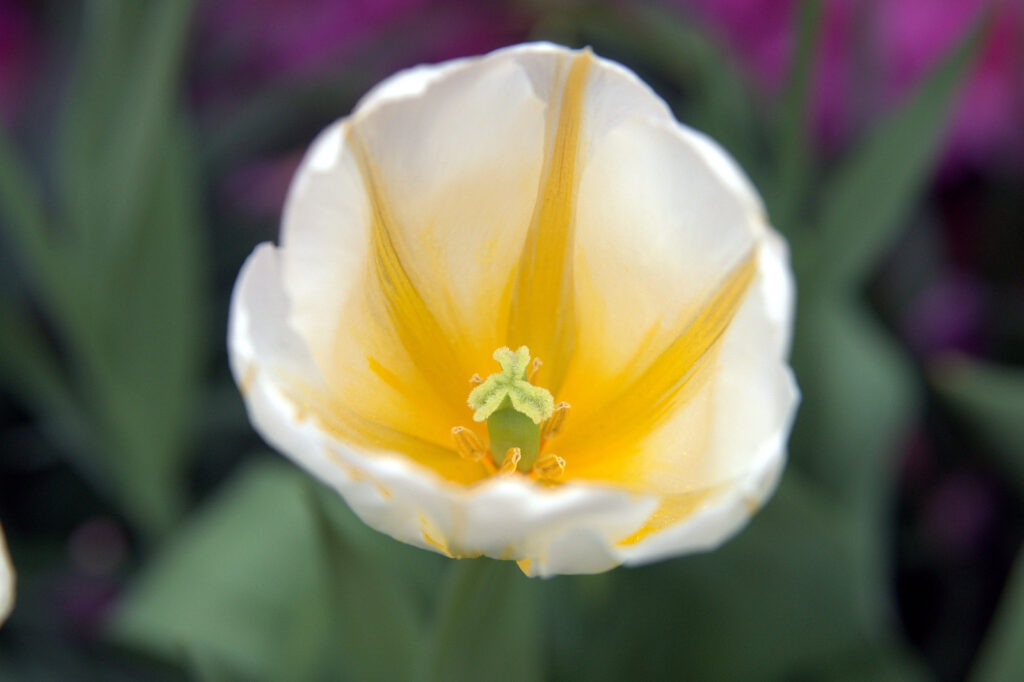
Tulip common problems
- Root and bulb rots are common in wet or poorly drained soil.
- Gray mold, slugs, snails, and aphids can be a problem.
- To protect bulbs from rodents that will dig them up, plant bulbs inside a wire mesh cage or place a wire mesh on top of the planting beds.
Tulip propagation
- Sow seeds of species in autumn.
- Separate offsets of species and cultivars after lifting in summer, replant, and grow on.
- Divide species tulips every two to three years when flowers start to become smaller; if flowers become very small, discard the bulbs.
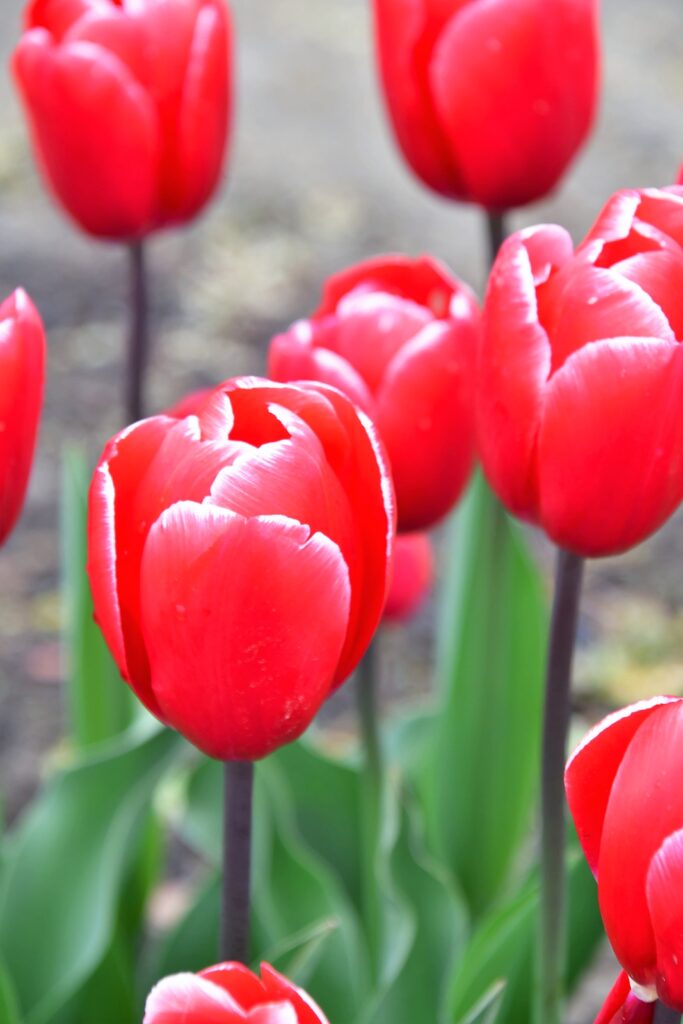
Tulips varieties to grow
- Choose tulips by looking at photographs, descriptions, colors, height, and bloom times.
- Tulips are divided into two groups, species tulips, and hybrid tulips.
- Hybrid tulips are divided into 15 divisions or groups based on flower forms and bloom time. Hybrid tulips include:
Hybrid Tulips–Tulip divisions
- Single Early Tulips Division 1): blooms in early spring, 2- to 4-inch (5-10cm) flowers are egg-shaped; 16 inches (40cm) tall.
- Double Early Tulips (Division 2): also called peony-flowered tulips: 4-inch (10cm) double flowers resemble a peony; bloom in early spring.
- Triumph Tulips (Division 3): bloom in mid-spring; single, egg-shaped flowers are 2 to 4 inches (5-10cm) high; 20 inches (50cm) tall.
- Darwin-Hybrid Tulips (Division 4): descendants of Darwin tulips, bloom in mid-spring before Darwins; oval- to egg-shaped flowers with square bases, to 4 inches (10cm) long; 30 inches (76cm) tall.
- Single Late Tulips (Division 5): Late-spring blooming tulips bear single 3-inch-wide flowers that are cup or goblet-shaped on 18 to 30 inch (45-91cm) stems.
- Lily-Flowered Tulips (Division 6): bear singe, goblet-shaped flowers that have slightly reflexed tepals with pointed tips; grow 18 to 26 inches (45-66cm) tall; bloom in mid to late spring.
- Fringed Tulips (Division 7): cultivars bear single 3-inch-wide, cup-shaped flowers with fringed tepals; grow 14 to 26 inches (35-66cm) tall; many cultivars.
- Viridiflora Tulips (Division 8): produce single flowers that have tepals that are either entirely or predominantly green; cup-shaped blooms are 3-inches wide.
- Rembrandt Tulips (Division 9): Also called “broken” tulips, bear single, cup-shaped flowers feathered and striped with various colors; striping is caused by a virus infection.
- Parrot
- Parrot Tulips (Division 10): bloom in late spring, 6 to 7-inch (15-17cm) flowers with petals that are fringed, cut, or feathered; 24 inches (61cm) tall.
- Double Late tulips: resemble Double Early tulips but bloom in late spring, also called peony tulips; flowers are 6 inches (15cm) across; 22 inches (56cm) tall.
- Double Late Tulips (Division 11): resembles Double Early tulips but bloom in late spring, also called peony tulips; flowers are 6 inches (15cm) across; 22 inches (56cm) tall.
- Kaufmanniana Tulips (Division 13): hybrids grow 4 to 8 inches (10-20cm) tall, single flowers that open almost flat; early spring bloomers; live for many years.
- Fosteriana Tulips (Division 13): bloom in early spring, 4-inch (10cm) single flowers; ‘Emperor’ varieties are the most popular; foliage is sometimes mottled or striped.
- Greigii Tulips Division 14): bloom in mid-spring to late spring; single flowers are 3 inches (7.6cm) tall and slightly pointed; grow 6 to 14 inches (15-35cm) tall; broad, wavy, mottled, or striped foliage.
- Miscellaneous Tulips (Division 15): Wide range of species tulips and also hybrids that are not included in other divisions.
A few species Tulips
- Tulipa acuminata (Turkish tulip): Blooms in mid-spring to late spring; 3- to 4-inch (7.6-10cm) flowers with yellow-pink petals that are long and pointed; grows to 18 inches (45cm) tall.
- T. albertii: grows 6 to 8 inches tall; glaucous blue leaves; orange-red blooms in early spring.
- T. aucheriana: grow 6 to 8 inches tall; bears starry, 3-inch-wide pink flowers that open flat with yellow central blotch.
- T. bakeri: grows 8 to 10 inches tall; bears fragrant star-shaped flowers in dark pink to purple-pink from mid-to late spring.
- T. batalinii: grows 4 to 8 inches tall; produces bowl-shaped 3-inch-wide, pale yellow flowers marked with bronze or dark yellow inside.
- T. clusiana (Candy-stick tulip): Blooms mid-spring to late spring; 2-inch (5cm) flower with pointed petals; grows to 15 inches (38cm) tall.
- T. greigii. See Greigii Tulip Division above.
- T. hageri: grows 8 to 10 inches tall; blooms are dull red with green flames and tepal tips and blue-black centers.
- T. humilis: grow 4 to 6 inches tall; bears starry, crocuslike rose-pink flowers in early spring.
- T. kaufmanniana. See Kaumanniana Tulip Division above.
- T. kolpakowskiana: grows 6 to 8 inches tall bears flowers to 3-inches wide that are yellow with red stripe on the outside and solid yellow inside.
- T. linifolia: grows 3 to 6 inches wide; red bowl-shaped blooms with a black blotch at the base; flowers are nearly flat on sunny days.
- T. maximowiczii: grows 3 to 6 inches tall, red flowers have a dark blue blotch at center, opens nearly flat on sunny days.
- T. neustruevae: grows 3 to 4 inches tall and bears yellow crocuslike flowers in early spring.
- T. orphanidea: grows 8 to 10 inches tall and bears solitary or clusters of up to four red flowers in early spring; flowers are marked with green or purple on the outside.
- T. polychroma: grow 3 to 4 inches tall with starry blooms of white flowers with a yellow center and violet-purple tip.
- T. praestans: grows to 12 inches (30cm) tall with red-orange blooms in early spring.
- T. pulchella: grows 10 to 12 inches tall, bears starry red to purple flowers with blue-black central blotches in early to mid-spring.
- T. saxatilis: grows 8 to 10 inches tall; produces fragrant star-shaped pink to purplish-pink blooms in mid to late spring.
- T. sprengeri: grows 12 to 14 inches tall, bears red or orange-red and yellow goblet-shaped flowers.
- T. sylvestris: grows 14 to 16 inches tall and bears yellow, starry, fragrant flowers in mid spring.
- T. tarda: grows 4 to 6 inches tall, bears clusters of starry golden-yellow blooms with white tips in mid-spring.
- T. turkestanica: grows 6 to 10 inches tall, bears start white with yellow or orange center flowers in early to midspring.
- T. uruminensis: grows 4 to 6 inches tall, bears starry yellow flowers flushed with cream, lilac, or red-brown on the outside in early spring.
- T. vvendenskyi: grows 10 to 12 inches tall, bears red flowers with black or red blotches at the base in early to midspring.
- T. whittallii: grows 8 to 10 inches tall, bears star-shaped bronzy orange flowers edged with red-purple in early to midspring.
- T. wilsoniana: grows 4 to 6 inches tall, beard dark blood-red flowers with pointed tepals and central black blotch.

